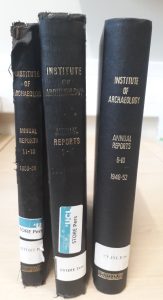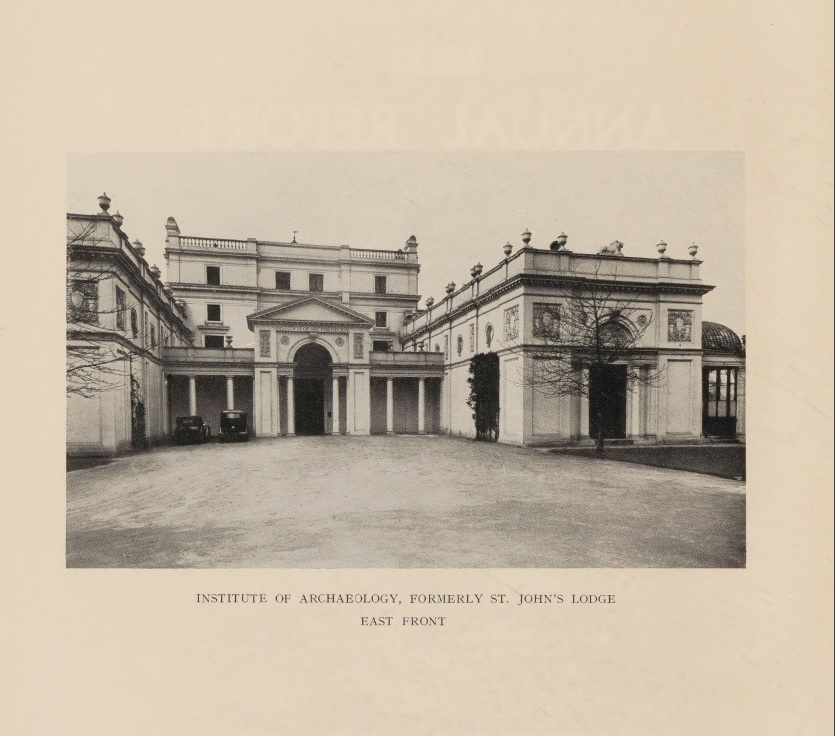Digitising the Annual Reports of the Institute of Archaeology, Volumes 1-13 (1938-1958)
By Vicky A Price, on 15 September 2022
This blog was written by Katie Meheux.
Volumes 1-13 (1938-1958) of the Annual Report of the Institute of Archaeology (formerly University of London, now UCL) have been digitised and made available as an open access resource through UCL Digital Collections and the Internet Archive following a project initiated by the UCL Institute of Archaeology Library and funded by UCL Special Collections.
The Annual Report was the Institute’s first annual journal, a tradition still continued today by Archaeology International. Each volume combined administrative information with academic research articles. Administrative reports outlined teaching, outreach, exhibitions, projects, excavations, collections, and lectures from visiting scholars – all the Institute’s day-to-day activities and a snapshot of its students, who came from all over the world. Research articles highlighted the international archaeological interests of the Institute’s staff – not just the academics, but librarians, photographers, and technicians too. Students also contributed research articles in a tradition now continued by Papers from the Institute of Archaeology.

The Institute of Archaeology volumes – in need of conservation and looking their age.
The Report was the first journal produced by a university archaeology department in the UK and forms an important research resource for the history of the Institute of Archaeology and archaeology as an international discipline. Like all archaeological journals, the Report reflected and absorbed changes within the wider discipline and as such, charts key developments and changes in archaeological practice during the twentieth century. Volumes also allow us to see how the Institute chose to present itself to the contemporary British academic community and its wider public audience.

Contents page of the first volume of Annual Reports of the Institute of Archaeology.
The COVID pandemic, which caused extended periods of closure and limited access to libraries during 2020 and 2021, highlighted the problems of retaining such a valuable research resource as print only. There was also a conservation imperative behind the project; to protect the fragile print copies held by the Institute library. The Annual Reports join other open access Institute of Archaeology resources, notably the Gordon Childe Skara Brae Notebooks (1928-1930), digitised as a joint project with Historic Scotland. British archaeological societies and organisations have been making historic journal content available for over twenty years, both independently and through the Archaeological Data Service (ADS), the leading digital repository for heritage data in Britain. Digitising historic journals means they can be used in new ways; for example, Gwynedd Archaeological Trust volunteers have been using open access historical journals to enhance the regional Historic Environment Record (HER) for north-west Wales.
Although print copies of the Reports can be found in libraries world-wide, providing online access will assist researchers, students, and the public and help to raise awareness of the rich and significant history of the Institute of Archaeology. Digitising the journal will broaden access for scholars, students, and the public, raise awareness of the rich and significant history of the Institute of Archaeology, and protect an increasingly fragile ‘in demand’ print resource for the future.

A picture of the Institute of Archaeology at St Johns Lodge – the frontispiece of the first volume.
 Close
Close


